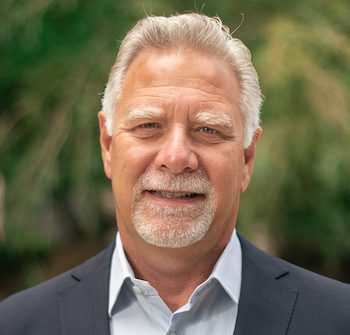
Written by David Field
Agricultural businesses are under growing economic pressures as drought conditions worsen and inflation continues to climb. Rising energy costs have been a particularly damaging repercussion of the drought, with farmers spending more on electricity in order to keep wells and irrigation systems pumping water to their crops.
California agriculture lost $1.1 billion in 2021 as a direct result of water shortages, and the Central Valley alone sat on roughly 385,000 acres of idle land. Unfortunately, intensifying climate change makes this year’s outlook just as grim. Not only did a ban on river and stream pumping by the State Water Resources Control Board severely cut water resources around the San Joaquin River and its tributaries this summer, farmers have been bracing for another year of near-zero water allocations by cutting back on crop production.
Low water supplies and high energy costs are a disastrous combination for Central Valley farmers. But, what if there was a way the agriculture industry could better survive in a future plagued by inconsistent water supplies and surging energy prices?
Saving on Electricity Expenses
Saving money on energy bills has made solar more attractive than ever, especially now considering the new Inflation Reduction Act offering additional benefits to renewable energy. But, making an investment in solar can be a challenge for agriculture both financially and logistically. For one, solar can be a large added capital expense that gets deprioritized — especially at times when money is already tight.
Without upfront cash, most agricultural businesses seek special loans to finance solar installations. Qualifying for financing, however, is a time-consuming and arduous process that makes it difficult for many farmers to complete. Having multi-ownership properties, like many farms in the Central Valley, compounds this difficulty.
Fortunately, new innovations in financing are making it easier for agricultural businesses to not only finance solar but also bundle solar with water conservation improvements.
Unlike loans provided by USDA or Farm Bureau, which provide funds to purchase a solar system but require the farm owners to manage the rest, third-party financing options — like a commercial power purchase agreement — offer an easier and more cost-effective alternative. With third-party financing companies, the system is owned by the financier who then manages everything from installation and upfront costs to maintenance for 25 years. This also means a fixed annual pricing and production guarantee so farm owners know exactly what electricity expenses will be each year for at least 25 years lower than what they are currently paying to the utility.
Third-party financiers will also monetize the solar investment tax credit (ITC) for farmers, a key advantage many farm businesses can’t realize benefit from on their own. This enables farm owners to further maximize savings for their business. These savings can then be utilized to finance other improvements such as water efficiency.
Now, in addition to installing solar, farm owners can better afford and also finance water conservation upgrades. Though dependent on crop type, this could include switching from spray irrigation — which loses 35 percent of the water applied — to hanging pipes or drip irrigation systems. Switching from high or medium pressure drip sprinklers to low pressure systems also conserves water and reduces distribution costs, and replacing diesel-powered pumps with newer, more energy-efficient models not only saves money on fuel costs but reduces emissions. Traditionally an out-of-pocket expense, these efficiency upgrades can be realized without touching the farm’s operating budget.
A Farmer’s True Story
The owner of a walnut and almond farm that spans a few thousand acres near Sacramento is living proof that it’s not only possible to tackle both rising energy costs and severe drought conditions simultaneously, but it’s also cost effective.
Looking to reduce increasing electricity bills, this Sacramento farm owner saw both solar and water efficiency improvements as the perfect combination to solve his energy woes. However, he also needed a financier capable of accommodating not just solar but also the water upgrades — as well as the property’s multi-party family ownership structure.
Through a single financing structure, the farm owner was able to finance a 694 kW fixed-tilt ground mount solar system and $500,000 in water efficiency improvements at no upfront cost. The farm owner is projected to save millions in electricity and water costs.
Sustainable Returns on Investment
While Central Valley agricultural businesses grapple with the consequences of limited water supplies, tapping into renewable resources like solar can help shoulder the burden. The need to use electricity to pump water from underground has been and will remain an essential part of the region’s operations. By installing solar — on an unused portion of farmland, perhaps — farm owners will see lower utility bills.
Water conservation, though another seemingly obvious initiative during droughts, is often not feasible with conventional financing options. Now, farm owners can pair solar (secured through a no-money down Power Purchase Agreement) with additional water efficiency improvements to irrigation systems (paid for by the solar savings). This powerful combination ultimately proves that realizing long-term savings all while enhancing sustainability of farm operations is achievable.
David Field is co-managing partner and co-founder of solar finance and development platform Luminia. He also founded OneRoof Energy, a leading developer and financier of residential solar projects, after leading the reorganization and turnaround of Applied Solar LLC. He also founded Clarus Energy Partners, a leading developer, owner and operator of distributed generation projects, which was acquired by Hunt Power in 2004. Prior to Clarus Energy, David co-founded Omaha-based Kiewit Fuels, a renewable energy company specializing in the development of biofuels production. He also has an extensive background in water technology and infrastructure development, with companies such as Bechtel, Peter Kiewit, and Poseidon Resources, as well as in corporate finance with Citicorp.






